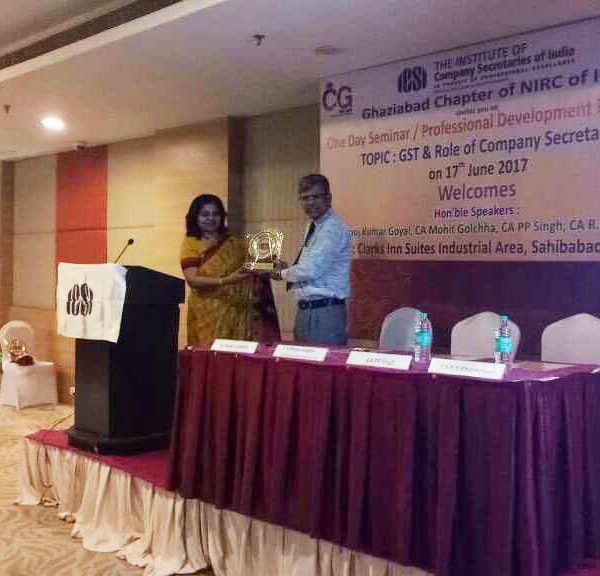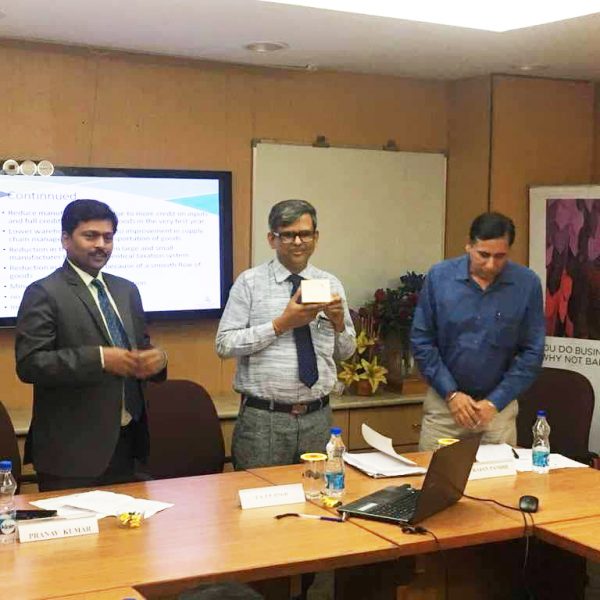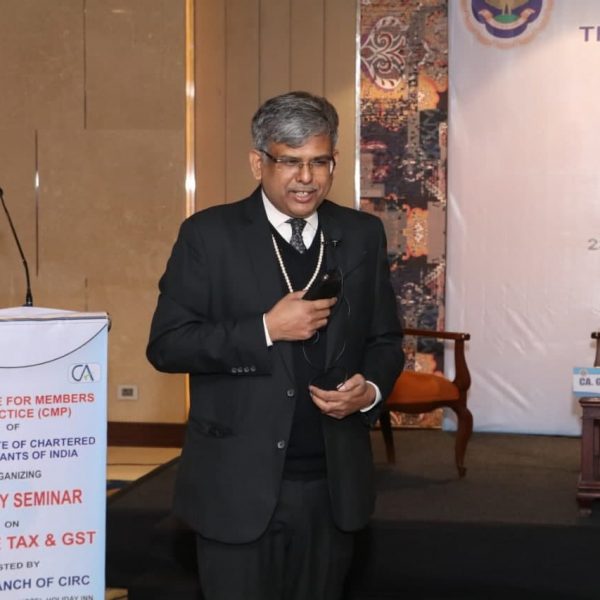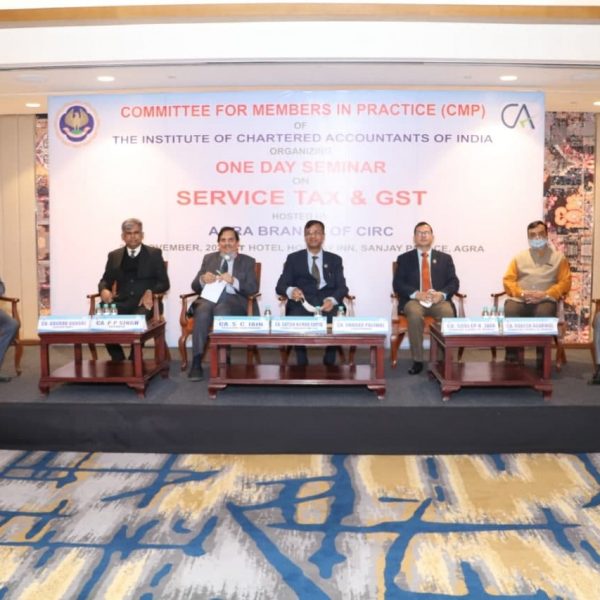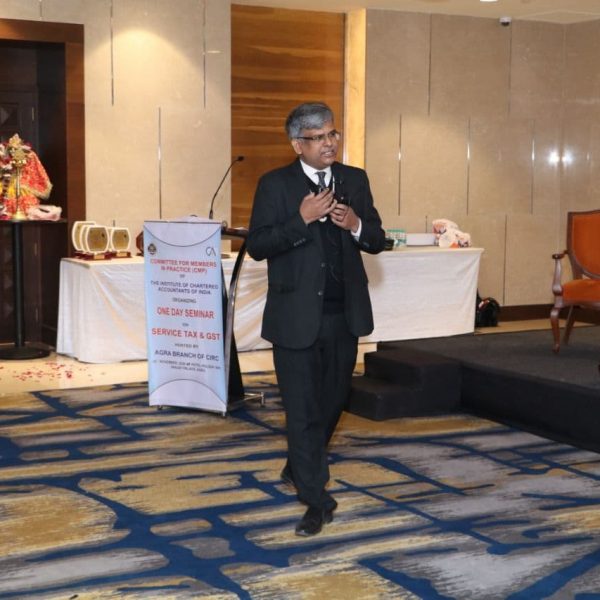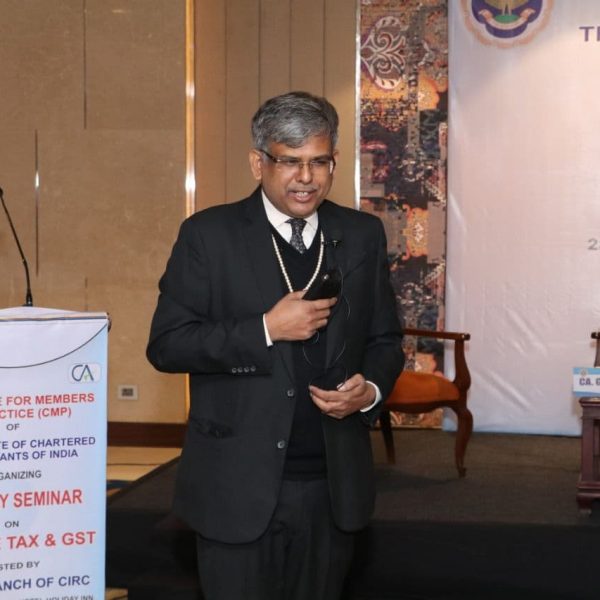Unexplained money, bullion, jewellery or other valuable articles and income tax law.
Introduction: several times unexplained money, bullion, jewellery or other valuable articles were found, this article has made effort to explain the provisions of income tax related to taxation thereof and how AO. and assessee deal with such cases.
Extract of section 69A:
“Where in any financial year the assessee is found to be the owner of any money, bullion, jewellery or other valuable article and such money, bullion, jewellery or valuable article is not recorded in the books of account, if any, maintained by him for any source of income, and the assessee offers no explanation about the nature and source of acquisition of the money, bullion, jewellery or other valuable article, or the explanation offered by him is not, in the opinion of the [Assessing] Officer, satisfactory, the money and the value of the bullion, jewellery or other valuable article may be deemed to be the income of the assessee for such financial year.”
Essential ingredients for taxation of unexplained money, bullion, jewellery or other valuable articles are:
- assessee is found the owner of such money, bullion, jewellery or valuable article during the F.Y
- Such money, bullion, jewellery or valuable article not recorded in the books of accounts if any maintained by him for any source of income
- No explanation was offered about the nature and source of the acquisition of such money, bullion, jewellery or valuable article
- an explanation offered about the nature and source of the acquisition of such money, bullion, jewellery or valuable article is not satisfactory in the opinion of A.O
- In such a case A.O may deem the money, and value of bullion, jewellery or valuable article as income of the assessee
- Deemed income of the F.Y in which assessee was found the owner of such money, bullion, jewellery or valuable article and not in the year in which search took place.
Meaning of money, bullion, jewellery: It is important to note the definition of bullion, jewellery etc.
As per explanation 1 section 2 (14)
“jewellery” includes—
- ornaments made of gold, silver, platinum or any other precious metal or any alloy containing one or more of such precious metals, whether or not containing any precious or semi-precious stone, and whether or not worked or sewn into any wearing apparel;
- precious or semi-precious stones, whether or not set in any furniture, utensil or other article or worked or sewn into any wearing apparel;
Meaning of bullion: Although the income tax Act 1961 used the term bullion in various sections but does not define the term bullion however hon’ble supreme court in the case of Dy.CST V/s G.S. Pai & Co. 1980 1 SCR 938 It was held in that ‘Bullion’ in its popular sense cannot include ornaments or other articles of gold. ‘Bullion’ according to its plain and ordinary meaning, means gold or silver regarded as raw material and it may be either in the form of raw gold or silver or ingots or bars of gold or silver. Ornaments and other articles of gold cannot be regarded as ‘bullion’, because even if old and antiquated, they are not raw or unwrought gold or gold in the mass. [Dy. CST v. Advani Coorlikon (P.) Ltd. AIR 1980 SC 609, 612, 613; Department Commissioner of Sales Tax (Law) Board of Revenue (Taxes Ernakulam) v. G.S. Pai & Co. AIR1980 SC 611, 612] .
Gold coins: Whether bullion or jewellery? Gold coins of various functions gold coins are generally gifted during Diwali and other festivals whether these items are jewellery or bullion? Gold coins are not bullion as can be seen from the above definitions. Further, these are not ‘jewellery’ as these are not for personal adornment.
How to apply section 69A by AO, was very well explained in the case of Kewal G. Bajaj Vs. ACIT [1999] 71 ITD 375 (Mumbai)/[2000] 66 TTJ 750 (Mumbai) ITAT – as under:
No automatic application of deeming provision: The statutory provision does not automatically make the value of money, bullion, jewellery or valuable articles deemed income of the assessee of the financial year in which the articles are found to be in the ownership of the assessee.
Opportunity to the assessee to explain/principle of natural justice: The Assessing Officer has to give an opportunity to the assessee to explain ‘the nature and source of acquisition of money or other valuable articles’.
Explanation from the assessee could not be rejected arbitrarily: if no explanation is given or the explanation given is lawfully rejected as unsatisfactory, the money and other valuable articles can be deemed to be the income of the assessee for the financial year. Having regard to the purpose and implication of the provision, the revenue authorities are to consider objectively the explanation, if any, rendered by the assessee. All explanations are required to be considered in accordance with the law. The matter has to be decided on a preponderance of probabilities. what is more probabilistic, accordingly to be decided.
How to construe section 69? It is a deeming provision relating to chargeability of artificial income and is to be construed strictly but purposefully.
Rebuttable presumption of law: It raises a presumption relating to deemed income but the presumption is rebuttable. Whether in a given case, the presumption has been rebutted or not would depend upon the facts and circumstances of the case. The case proved on record cannot be ignored. The provision of section 69A merely constitutes a rule of evidence raising certain presumptions which can be rebutted with the explanation of the assessee or other evidence on record.
Ownership is a must: This section is applicable only when the assessee is ‘found to be the owner’ of any money or valuable articles. The words and expression ‘explanation about the nature and source of acquisition’ are wide enough to permit the assessee to explain that the valuable asset is not in the ownership of the assessee or that it was acquired from a known source or that at least it was not acquired in the year under consideration.
Year in which addition to being made: Addition in the year of acquisition and not in the year of search. The revenue’s contention that the addition is to be made in the year of search if sources of acquisition are not properly explained cannot be accepted. The nature and ownership of cash and valuable articles have to be examined with reference to the explanation of the assessee and other material available on record and in case the assessee is able to establish that valuable articles were acquired not in the financial year in which the search took place but earlier, the addition, if any, is to be made in the year in which the articles are shown to have been acquired. This is the only way the provision can work.
Evidence can be led of the year of acquisition: The assessee can further lead evidence to prove the year and source of acquisition. Even if no satisfactory evidence is led on the source of acquisition, the evidence on year of acquisition cannot be ignored.
Illustration: suppose in search some valuable articles are found. The assessee through documentary evidence proves that the said valuable articles were acquired four years earlier, but the assessee is not able to explain satisfactorily the source of the acquisition of articles. In such case addition is to be made only in the year in which the article is proved to have been acquired by the assessee, otherwise, it would mean that the explanation of the assessee has not been considered at all. To make an addition in the year of raid is to ignore the mandates of the section.
Ownership Vs. Possession:
Ownership is the legal right or bundle of legal rights for an indefinite period recognised by law and protected under the law including 1. right to use 2. right to prevent others from utilising the same, 3. right to transfer, sale, disposal, or destroy etc. ownership is a more powerful right than possession as it is an absolute right, complete freedom to hold property, freedom to use property, freedom to depose of property, and such rights are against rem. Ownership is de-jure acknowledgement of a claim to a particular property and it is different from possession where in possession of a right is the de-facto relationship of continued exercise and enjoyment over the object. For example, a tenant residing in a house has possession but no ownership over the house. A person having a temporary house on the land of others has possession over the land but no ownership.
Possession is the actual exercise of claim/control over the object and the intention to have control to prevent others. Therefore Legal possession has two elements 1. Corpus possession 2. Animus possidendi / animus domini.
The corpus possession denotes two things (a) possessor’s physical relationship to the object / res i.e effective physical control over the object for use by such person and others won’t interfere / others are prevented to use with his right and (b) possessors relationship to the rest of world. Possession of a physical object is called corporeal possession whereas Incorporeal possession is rights to property that can’t be seen or touched but are still enforceable by law.
Animus possidendi / animus domini – possession does not merely juxtaposition but it implies the possibility of bodily control as well as the desire to control. In other words, the mental component of possession is also equally important. There can be no possession without the mental aspect of animus. For example, a transporter transporting the goods has temporary control over the goods but no desire to control them for an indefinite period therefore he has no possession over the goods.
For applicability of section 69A ownership of money, bullion, jewellery or other valuable articles is a must. Merely on the basis of possession deemed income could not br taxed. Ownership and possession are explained in the preceding paragraph in detail.
No presumption of ownership statutorily neither in favour of the revenue nor against the assessee, there is no warrant to invoke section 69A merely on the basis of the assessee’s possession.
- Articles found in his possession do not belong to him and the burden lies on the revenue to establish the ownership of the assessee before raising any presumption against him. “ Mangilal Agarwal V/s. Asstt. CIT [2007] 163 taxman 399(RAJ)”.
- The finding given by the Directorate of Revenue Intelligence under the Customs Act, cannot be made the basis for the presumption of ownership against the assessee, false declaration, evasion or attempt at evasion of any duty chargeable. It is not necessary for the customs authorities to prove the ownership of the goods. It is enough if there is an attempt by any person, including a carrier, of evasion of any duty chargeable thereon or any prohibition for the time being imposed under the customs Act.t was to be held that if the assessee had been doing this business of carrying items customers on payment, then this activity would assume the character of carrying business and the money confiscated from her would have to be treated as business loss, in view of the Supreme Court’s decision in Commissioner v. Piara Singh [1980] 124 ITR 40 (SC) Authorities have no occasion to consider the issue of ownership nor it has been adjudicated upon by the customs authorities. Therefore, The finding given by the Directorate of Revenue Intelligence cannot be made the basis for the presumption of ownership against the assessee, contemplated under section 69A. Ms. Reena H. Mirchandani v. Asstt. CIT [2000] 66 TTJ (Delhi) .
- The word owner has different meanings in different contexts, during a search, cash of Rs. 33 lakhs was found in the locker of the assessee. The assessee’s explanation was that the entire cash found in the locker was a donation/contribution made by various persons to a Charitable trust. The list of the names of persons making contributions on different dates along with details of addresses of those persons was also enclosed along with the said letter. The assessee was called upon by the Deputy Director (Investigation) to produce all the donors for examination. The assessee did not produce the donors for examination. In the post-search enquiries conducted by the Deputy Director (Investigation), several donors were examined and it turned out that they denied acquaintance with the assessee. The Assessing Officer held that the cash found from the locker of the assessee belonged to the assessee and not to the trust and, accordingly, an addition was made to the assessee’s income. From the mere fact that the locker from which cash is found stood in the name of the assessee, it could not be conclusively said that the cash belonged to the assessee. Asstt. CIT v. Smt.Kusum Ramniklal Sanghani [2010] 4ITR (Trib.) 582 (Mum.)
Presumption of the law of ownership u/s 110 of the Indian Evidence Act 1872 –
The burden of proof as to ownership. When the question is whether any person is the owner of anything of which he is shown to be in possession, the burden of proving that he is not the owner is on the person who affirms that he is not the owner.
The presumption of law is that a person in possession of anything is the owner of such thing and if someone affirms that he is not the owner then such person has to prove that the person having possession is not the owner. the burden of proof fixed on the person who denied the ownership of the person having possession over anything.
Applicability of section 110 of the Evidence Act: onus of proving the source of deposit primarily in the person in whose name the deposit applies in various banks.
-
- K’s statements were recorded on various dates, where he had admitted that the partners were fictitious; that they were not eligible to any shares in the profits of the firm; that monies were lying in various banks in FDRs in the names of these so-called partners and that a part of that amount belonged to the members of the public. This part of the statement was not accepted by the department. In view of the aforestated position, the Assessing Officer proceeded to frame the assessment in the hands of ‘K’ on a protective basis and in the hands of deposit holders for unexplained deposits. Since the assessee failed to show that the amount in question did not represent his income, the department was justified in treating the amount as the assessee’s income under section 69A CIT. v. K. Chiunnathamban [2007] 162 Taxman 459 (SC)
- Pursuant to a search operation a sum of over Rs. 2 crores was found credited in the assessee’s accounts at various branches of two banks – As the assessee failed to furnish addresses and other details of persons to whom said amounts allegedly belonged, revenue added entire amount as unexplained money under section 69A to his total income – Whether since the entire amount was deposited in assessee’s accounts, and he was not prepared to disclose the source of its receipt, it could be presumed that assessee was the owner of entire money, and he has failed to prove that money did not belong to him, authorities were right in assessing him under section 69A- M. Sundaram v. Asstt. CIT [2007] 161 Taxman 54 (Mad)
- Section 69A of the Income-tax Act, 1961, read with section 110 of the Indian Evidence Act, 1872 – In course of assessment proceedings ITO found that the assessee along with others was involved in a case of seizure by customs authorities of contraband goods with certain transport conveyances – Customs authorities determined value of such contraband goods and imposed personal penalty upon assessee and others. As there was no material on record to hold that assessee was in possession of contraband goods so as to infer his ownership of such goods with help of presumption under section 110 of the Indian Evidence Act, the proportionate value of such contraband could not be added to the income of the assessee under section 69A. Possession of physical objects is called corporeal possession the exercise of this claim involves two ingredients i.e corpus possession and animus possidendi. The intention to possess and exclude others is necessary for the acquisition of title by adverse possession removing and transporting the contraband goods from the jetty godown through the trucks did not lead to the conclusion that the deceased assessee was in possession of such contraband goods so as to attribute the ownership thereof to him for the purposes of section 69A- Smt. Naynaben Mansukhlal Raichura v. ITO [1991] 36 ITD 332 (Ahd).
- Unexplained money – Whether where gold is seized from the assessee, for invoking section 69A assessee should be shown to be the owner of such gold and mere possession of gold cannot lead to the presumption of ownership. Section 110 of the Evidence Act, 1872 – Burden of proof as to ownership – where Income-tax authorities do not produce any material to indicate that gold found in possession of a person belongs to him, whether they can invoke section 110 of Evidence Act to place a burden on such a person to prove that he is not the owner of such gold. It is no doubt true that the assessee has not stated who is the owner of the seized gold. The Tribunal has proceeded on the basis that the assessee is only a carrier and the owner of the gold is underground. From the mere fact that the assessee has not stated who is the owner of the gold., it cannot be assumed that the assessee is the owner of the gold. It may be that the assessee himself may not know who is the owner and he may be one of the carriers passing on the gold without knowing as to who the true owner of the gold is. Tribunal apart from relying on the finding of the Chief Presidency Magistrate that the assessee is only a carrier and his conviction on the basis that he is in possession of the smuggled gold also refers to the fact that the assessee has only a petty oilman store at Madurai and that he is not a dealer in gold. the fact that the assessee is a small oilman store and not a dealer in gold is relevant material to find out whether the assessee could have acquired the gold for himself. The Tribunal has come to the right and the conclusion that the materials produced in the case do not indicate that the gold belonged to the assessee. section 110 of the Evidence Act-CIT v. S. Pitchaimanickam Chettiar [1983] 15 Taxman 68 (Mad).
- The Assessee was found carrying primary gold in his car allegedly smuggled and was held to be the owner of said gold – Consequently, the addition of the value of such gold was made to the assessee’s income – Tribunal, based on a finding of Collector of Customs, concluded that another person was financier and receiver of gold in question – Custom authorities had held that the assessee was only a carrier of smuggled gold seized from him and another person was financier/ owner of the smuggled gold, addition under section 69A not justified. –CIT v. Mohd. Masoom [2001] 117 Taxman 499 (Delhi).
The burden of proof is on the assessee and not on his legal heirs
Section 69A of the Income-tax Act, 1961 – Unexplained money – Assessee was found carrying cash by police – He was a minor at such time and also at the time of his death subsequently legal heirs of the deceased minor could not produce any evidence with reference to the money recovered from assessee and same was treated as deemed income under section 69A and was assessed to tax by Assessing Officer – Whether it could be said that after minor’s death, the burden shifted to legal heirs of deceased – Held, no – Whether there was any material on record to suggest that he could earn said money just within a period of two months after leaving his school. Section 110 of the Evidence Act, it was the deceased only who could explain and discharge his burden by referring to certain material or evidence. Unfortunately, he died in mysterious circumstances even before the assessment proceedings were initiated. Therefore, it could not be said that after his death, the burden shifted to the legal heirs of the deceased. The legal heirs could not be forced to explain such circumstances which were not known to them- Smt. Rajabai B. Kadam v. Asstt. CIT [2002] 83 ITD 229 (Pune).
AO’s satisfaction is the most important for addition, not the satisfaction of some other authority. Assessee’s firm was engaged in the business of purchasing gold bullion and converting same into ornaments for export – There was a raid in its business premises by custom authorities during which certain gold jewellery and gold idols were seized as they were of foreign origin and smuggled goods and had no valid import document – Relying on findings of custom authorities, Assessing Officer made additions to assessee’s income on account of unexplained jewellery. On Such facts revealed by the customs authorities, Assessing Officer made additions relying on that, had been set aside by appellate authorities; because Assessing Officer had not made any independent enquiry; and there was no corroborating evidence to support the case of revenue. CIT v. Vignesh Kumar Jewellers [2009] 180 Taxman 18 (Mad)(HC).
source of cash deposit was withdrawals but there is a time lag: Where there were sufficient cash withdrawals to cover cash deposits in question, merely because there was a time gap between the withdrawal of cash and cash deposits, the explanation of the assessee could not be rejected and addition on account of cash deposit could not be made –Asstt. CIT v. Baldev Raj Charla [2009] 121 TTJ (Delhi) 366.
Cash was found by CBI at his premise explained by the politician as belonging to his party A search was conducted at the residential premises of the assessee situated at Delhi and Mandi by the CBI and income-tax authorities. During the search, one bundle of loose papers and certain cash was found and seized by the department certain diaries/note-pads were seized by the CBI. Copies of the said diaries were subsequently forwarded by the CBI to the Revenue Secretary who in turn, handed over the same to the Income-tax Department. The Assessing Officer found certain receipts, investments/deposits recorded in the said diary. The assessee has failed to explain the same.
Where the assessee accepted possession of cash and claimed that it belonged to his political party and President and Treasurer of said party denied having given any money on behalf of the party to the assessee, an addition made by AO under section 69A deserves to be upheld. Notwithstanding the fact that CBI had levelled allegations against the assessee about disproportionate wealth amassed by him by corrupt and illegal means or otherwise abusing his official position as a public servant, since the case of revenue against assessee was never based on such allegations and addition in respect of said cash was made by Assessing Officer under section 69A treating same as unexplained, a plea of the assessee for treating said cash as income from bribe/illegal gratification and for allowing deduction on account of possible confiscation by Government was farfetched and could not be accepted. – SukhRamv. Asstt. CIT [2006] 99 ITD 417 (Delhi).
Money Belonging To Others:
- Cash was found in the locker in the name of another person Where jewellery was found in a locker whose key was seized from the residential premises of the assessee but the locker stood in name of a son of the assessee, the assessee could not be treated as the owner of jewellery found in locker PUSHPAVADERA vs ITO [1983] 15 TTJ 447 (DEL).
- Where the assessee was a director along with her husband of a private limited company and money found in a search at her premises was claimed to have been accounted for in the books of account of the above company, the explanation of the assessee was reasonable and said amount could not be treated as her income. Mrs. K.S. Mohamedv.ITO [1989] 33 TTJ (Bom.).
- Saving / stridhan where the assessee explained that money credited in the account of his wife represented savings effected by her out-of-household expenses, the source of receipt should be deemed to be established and money was not liable to be treated as his income merely because he could not explain satisfactorily how his wife made saving and why she did not deposit it in the bank at any earlier date R.B.N.J. Naidu vs CIT [1956] 29 ITR 194 (Nagpur).
CBDT instruction no 1916 dated 11-05-1994 related to the seizure of valuables:
Instances of seizure of jewellery of small quantity in the course of operation under section 132 have come to the notice of the Board. The question of a common approach to situations where search parties come across items of jewellery has been examined by the Board and following guidelines are issued for strict compliance.
(i) In the case of a wealth-tax assessee, gold jewellery and ornaments found in excess of the gross weight declared in the wealth-tax return only need to be seized.
(ii) In the case of a person not assessed to wealth-tax gold jewellery and ornaments to the extent of 500 gms. per married lady 250 gms per unmarried lady and 100 gms. per male member of the family, need not be seized.
(iii) The authorized officer may having regard to the status of the family and the customs and practices of the community to which the family belongs and other circumstances of the case, decide to exclude a larger quantity of jewellery and ornaments from seizure. This should be reported to the Director of Income-tax/Commissioner authorising the search all the time of furnishing the search report.
(iv) In all cases, a detailed inventory of the jewellery and ornaments found must be prepared to be used for assessment purposes.
Conclusion: Effort has been made to explain the provisions of unexplained investments under provisions of section 69A of the income tax Act 1961 in the best possible way, however for any clarification readers feel free and may approach the author at cappsingh@gamil.com.

